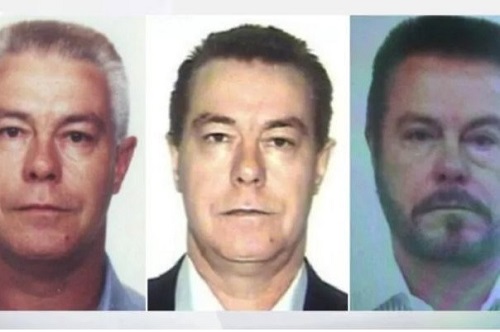AP photo
By
Ricardo Swire
“The word Spectrum refers in Portuguese to the phantom-like nature of a fugitive, who lived discretely and in the shadows evading police for almost thirty years.” – recent statement delivered by a high ranking Brazil Federal Police official.
On July 1, 2017 twenty-four Brazilian Federal Police Counter-Narcotics operations conducted by one hundred and fifty officers, seized prestige automobiles, aircraft, farms and real estate collectively valued US$10 million. Operation Spectrum law enforcers also detained the legendary specter known as “Cabeca Branca” or “White Head” in Sorriso (Smile) city, in the central Brazilian state Mato Grosso.
White Head’s £75.9 million personal fortune spread across offshore bank accounts, vehicles and property. He received plastic surgery to evade law enforcement. The specter also changed his name and masqueraded as a married professional Agriculturalist with a young son. The family lived in Rio de Janeiro, Brazil. White Head’s drug syndicate introduced five tons of cocaine to the drugs market. After Operation Spectrum officers detained the suspect photographic data, showing White Head’s original facial characteristics, was compared to an updated photograph. Officers concurred both images were the same person.
For three decades the Brazilian specter managed a complex and deadly cocaine network. Associated members used armored cars and high caliber firearms for protection. White Head had selective control of secret labs in Bolivian, Colombian and Peruvian jungles, warehouses in Paraguay and Brazil, along with distribution systems in America and Europe. His organization was a featured cocaine supplier to local Sao Paulo and Rio de Janeiro traffickers.
Consignments were transported by plane from manufacturing points via Venezuela to isolated farms in western Brazil. Trucks, modified with secret compartments, moved the cocaine to Brazil’s main cities for shipment overseas. A few days before Operation Spectrum’s detention of the legendary cocaine kingpin, a Brazilian Air Force jet fired warning shots at a suspicious small plane and forced it to land in Goias state western Brazil. After law enforcers searched the grounded aircraft half ton of cocaine was discovered aboard.
Updated regional intelligence data identifies Bolivia as Brazil’s greatest cocaine source. Trafficking activity is constant along the two thousand one hundred and twenty-six mile frontier. One Brazil Federal Police Counter-Narcotics agent identifies the state of Rondonia as a popular Bolivian trafficking route. Product is also transported on similar small planes to private landing strips in Brazil. The consignment is transferred over land to Porto Velho. Additionally consignments are smuggled in luggage ferried to river ports, or inside small dugout canoes that journey along the Mamore River, mainly during late night hours.
The Mamore River meanders between Brazil and Bolivia with several docking facilities at least one hundred meters apart. Cocaine consignments are stockpiled in “Guayaramerin,” a Bolivian border town. Twenty minute flights transport product to Brazil. The remainder is shipped by canoes across the Mamore River. Traffickers pay US$50 per kilogram or two point two pounds of cocaine. In Porto Velho, capital of Rondonia state Brazil, product is retailed for US$250 per kilo. After a similar portion reaches San Paulo, or other Brazilian big cities, the price is US$6,000 each kilo.
Ricardo Swire
Ricardo Swire is the Principal Consultant at R-L-H Security Consultants & Business Support Services and writes on a number of important issues.



No Comments Yet!
You can be first to comment this post!